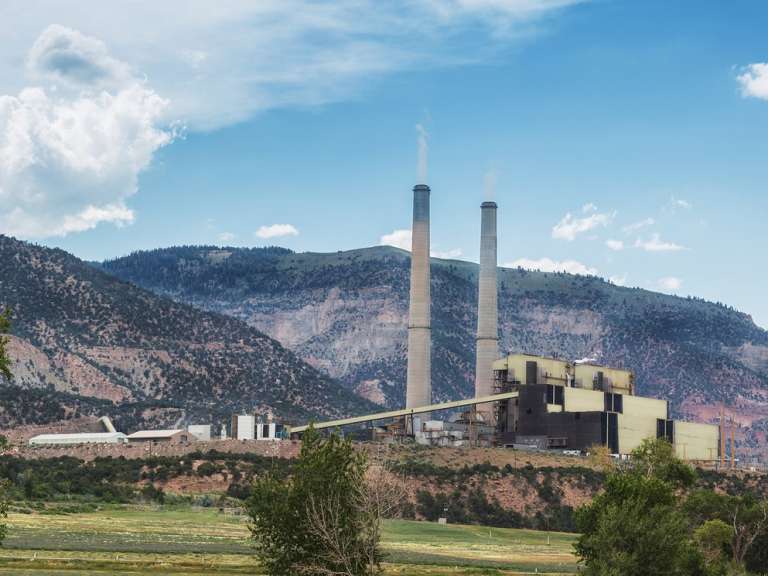Increasing Brainpower in the Power Plant
Diana KightlingerPlant applications that use big data analytics and AI are helping operators raise efficiency, lower costs, improve maintenance, and lessen environmental impacts.

Every day, the equipment and infrastructure that make up a power plant produce a staggering amount of data. From distributed control systems to plant alarms to countless sensors, these components produce information that seems infinite and overwhelming. But when analyzed and exploited by novel plant applications, the data offers enormous potential.
Understanding how power plant operators reap value from reams of collected data requires sorting through a few terms first:
To use intelligent applications, power plants must start by managing and mixing data both from legacy (sometimes analog) systems and contemporary IoT (Internet of Things) devices. Once a sufficient store of quality data is available for analysis, applications can provide actionable insights for operations, maintenance, environmental improvement, and forecasting.
Big data analytics were the key to restarting the A2A Group Chivasso power plant in Northern Italy in 2015, according to Business Wire. In addition to updated hardware, A2A Group implemented a digital plant application suite that sits atop a machine data analytics platform. With that, Chivasso achieved a minimum load level of 65 MW per gas turbine and load ramping at up to 50 MW per minute—two and a half times the normal rate.
The suite includes plant applications that increase boiler reliability and efficiency, fine-tune coal combustion and exhaust gas management, enhance plant-operating practices, and match a plant's output to the grid's power needs. The full suite has the potential to increase operating efficiency by 1.5 percent, reduce carbon dioxide emissions by 3 percent, and reduce coal consumption by 67,000 tons for each MW of electricity produced, according to InformationWeek.
In 2003, power station failures that cascaded through the Northeastern United States and Canada resulted in a blackout that impacted 50 million people, according to The New York Times. But even a local steam turbine failure can cause critical disruption, damage, and economic loss to a plant, as well as the consumers and businesses that rely on it.
With the advent of the Industrial Internet of Things, many plants monitor equipment in real time with devices that include sensors for temperature, vibration, flow rate, and other vital measures. Even so, most maintenance remains reactive or preventive instead of predictive, according to Plant Engineering. With sufficient data and machine-learning techniques, systems can analyze grid information at any moment to detect health, perform smart fault analysis, and take protective measures before an issue becomes crippling.
A digital twin can help by simulating scenarios in real time and scheduling maintenance based on need, rather than the calendar. This virtual model can alert operators when a critical physical asset or system is varying in crucial ways from expected behavior. It can then provide the costs and benefits of various options to prevent a dire outcome.
Even if no serious issue confronts operators, AI can still prove useful. For instance, AI can better predict the likely output from wind turbines, based on weather patterns, and help operators select maintenance days when the turbines are less likely to be operating, according to the BBC. Programmers have even created plant applications that allow assets to use the data they generate to improve their own maintenance.
Neural networks also play a role in improving plant performance. One example comes from Minneapolis-based Xcel Energy. Two of its coal-fired Texas plants produced both carbon and nitrous oxide emissions. To reduce emissions, the company equipped the smokestacks with neural networks, as Digital Journal reports. The neural networks analyze coal combustion data and make smart recommendations on adjusting operations to reduce emissions while providing peak efficiency.
Software solutions that rely on big data analytics and applications of artificial intelligence offer many opportunities to transform power plants. Achieving value requires an understanding of the potential of new and emerging technologies, as well as sufficient, high-quality data to analyze and learn from, and the ability to put findings into perspective based on experience. With that, plant operators can look forward to a greater ability to raise efficiency, lower costs, improve maintenance, and lessen environmental impacts.
The role of the utility customer is changing, from ratepayer to supplier, storer, and balancer of the electrical load. As customers embrace distributed energy resources, utilities need to consider new positioning and pricing to maintain their viability.
For power plants to get the most value from hybridization, it will take a careful approach that incorporates learnings from the old world and the new.
Neural networks provide a cost-effective software solution to tackle challenges including power plant flexibility, emissions, and efficiency.